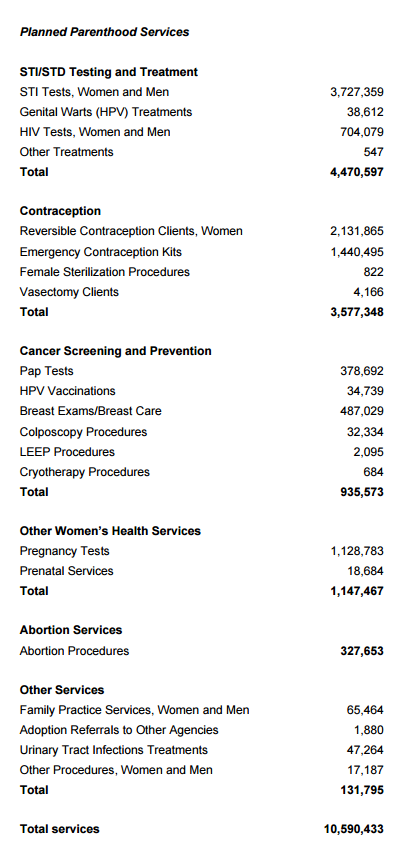What Planned Parenthood Actually Does

By:
Many Republican presidential candidates and members of Congress are on a war path trying to defund Planned Parenthood. The organization receives more than $500 million in government funding per year for the purpose of providing women's health services, and politicians who don't like the fact the services include abortions want to take that money away. One question many have asked is: how much of Planned Parenthood's work focuses on abortions, and why is the government funding this organization when there are other clinics that do similar things without doing abortions?
RELATED: What You Should Know About the Planned Parenthood Controversy
There is a dispute as to how much of Planned Parenthood's work focuses on abortion. According to Planned Parenthood, about 3 percent of its services are abortion services. That number comes from counting how many abortions the provider performed in a year compared to how many times it did an HIV test or a cancer screening or provided women with long term contraception.
Some have argued the 3 percent figure is misleading, because it doesn't factor in that people often take advantage of more than one service per visit. Someone might get an abortion and contraception in the same visit, and they might be counted as two different services that are added up for the total.
With that in mind, PolitiFact did an analysis of Planned Parenthood's reports and found that 12 percent of the organization's patients receive abortions. It would seem that non-abortion services count for either 97 percent or 88 percent of what Planned Parenthood is doing. Furthermore, none of the federal funding Planned Parenthood receives goes to abortion services. So what else is happening at its clinics?
First of all, in response to the idea that other clinics could take on the workload Planned Parenthood does if it went away, that's not necessarily the case.
"In terms of the claim that other providers could step in an provide what Planned Parenthood does, that is absolutely false," Liz Clark, a Planned Parenthood representative, told ATTN:. Each state has a different level of access to health services women need. A woman in New York City could probably find another place to get contraception or a cancer screening, if she can afford it (most of Planned Parenthood's patients are low income), but a woman in rural Texas might not fare so well.
Texas actually did defund Planned Parenthood and other clinics that perform abortions in 2011. What happened? The number of women who received health services between 2011 and 2013 was 25 percent below average for the state and as high as 50 percent below average in certain parts of the state. Without as much access to Planned Parenthood, many women went without healthcare services. The Congressional Budget Office believes around 650,000 women nationwide would go at least partially without health services if Planned Parenthood is defunded. Most of those women are from low income families that can't afford other options or don't have access to them.
What services does Planned Parenthood provide?
 Planned Parenthood - plannedparenthood.org
Planned Parenthood - plannedparenthood.org
As you can see from this breakdown of Planned Parenthood's most recent annual report, the organization does a variety of things. At the top of services it provides is screenings for STDs for both men and women (nearly 4 million per year) and then reversible contraception for women (more than 2 million per year). Reversible contraception can include things such as intrauterine devices (IUDs) and birth control implants. As you can see, Planned Parenthood does a lot more than help women end unwanted pregnancies.
Many have argued that defunding Planned Parenthood would actually increase the amount of abortions, because the money that could be taken away would be the money that goes to contraception and other services. If you have less contraception available to the public, then you have more unwanted pregnancies, and then there will be more abortions (performed by professionals or otherwise).
"An estimated 217,000 abortions are prevented each year by Planned Parenthood contraceptive services," Clark said. The more services available to women, it seems, the less problems occur.
